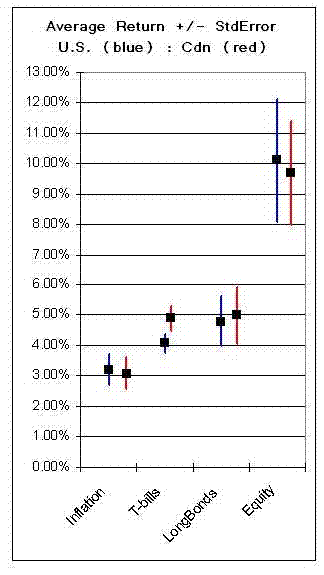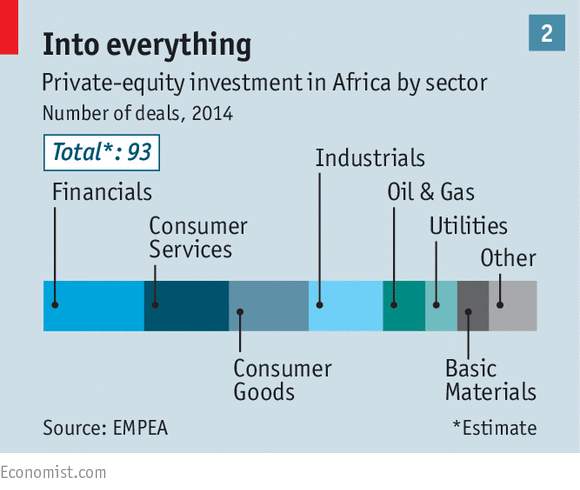Retail Investo Understanding changes to Owners Equity Investor Education
Post on: 7 Июль, 2015 No Comment

Dividends
- Dividends paid on common shares are not created out of thin air. They are a transfer of value from the company to the owner. Each dividend dollar creates a dollar capital loss. This is completely different from dividends paid on preferred shares. In that case the dividends ARE income because the principle (face value of the preferred share) has not been affected.
- Dividend dollars earn the investor a rate of return usually far lower than the return earned by reinvesting in the business. This depends on the incremental ROE, but generally cash inside a business is more productive than cash in the secondary markets.
- Dividends reflects a lack of better business opportunities, or a preference by management for a certain type of investor.
- Companies with large DRIPs know the cash for those dividends will never leave the company bank account. With (say) 25 percent of investors in DRIPs, the company can declare a dividend one third higher than it could otherwise afford.
- When some shareholders DRIP and others take cash dividends, neither class of owners ends up better or worse off than the other. Those that DRIP gain extra shares. Those taking cash have their ownership % diluted.
- Management compensation that depends on capital appreciation may contain clauses protecting management from large dividend effects. The number of stock options held can be grossed up by the capital lost to the distribution. Similarly, when convertible securities are issued to ‘friends of the business’ there can be a provision to lower the exercise price because of distributions. The resulting dilution is not captured by any reporting metrics.
- Dividends can be used to hide management compensation, because dividends are not a deduction before Net Income. Shares are issued to management for debt. Dividends paid on those shares are journal-entry’d to pay down the debt and should be considered management wages. The issue of shares is just an excuse to label the cash ‘dividends’ instead of ‘wages’. The exact same thing could be accomplished by paying wages and requiring the executive to buy shares with it. It is impossible to determine from the financials what the dollar value of this is. While this strategy will always raise reported Net Income in total, it will only raise EPS when the dividends are greater than earnings, so you see this strategy in REITs and Income Trusts with high distributions. See separate page of explaination .
- Dividends can be used to hide management compensation a second way. When shares are repurchased and not cancelled (or issued without being sold to outsiders), they may be in a trust structure for the benefit of management. That means any dividends received by those shares do not accrue back to the benefit of the company as a whole. They increase the value of the trust — usually spent buying more shares for the trust. This eventually is distributed to management.
- Dividends can be used to hide interest expense. It is not unusual to see the AVERAGE number of shares outstanding in a period being greater than the number outstanding at both the BEGINNING and END of the period. This may be the result of a delay between the time of issuing new shares on the exercise of stock options and the time of repurchasing them from the market. But this may also indicates the existence of financing with company shares. There may be an agreement with a bank to sell them shares for cash, and a repurchase price agreed at the start. That price includes interest on the cash ‘borrowed’. Any dividends issued during the period would reduce interest added to the repurchase price.

Share BuyBacks
- Share buybacks are equivalent to the payment of dividends. The cash moves from the productive operating sector of the economy to the secondary markets, just like dividends do. If 5% of the outstanding shares are repurchased then the investor has a 5% gain.
- Unlike dividends, the cash for buybacks goes to people selling their shares, rather than to the continuing owners.
- Unlike dividends, no taxes on the investor are triggered by share buy-backs.
- When offset by the issue of additional shares (say, from the exercise of options), there is no benefit to owners. This is ignored in the many reports claiming that buybacks have replaced (historically much higher) dividends.
- The timing of share buybacks should be opposite from the time chosen to exercise stock options. Options will be exercised when the owner believes the stock price is peaking. Companies should invest in their own shares when the stock price is bottoming. for the same reason everyone buys shares (buy low — sell high). In practice, companies may buy back shares BECAUSE of options being exercised — at the exact worse time.
- When US domiciled multi-nationals earn profits in foreign jurisdictions, the cash profits would be taxed if repatriated for share buy-backs. So US companies borrow in the US to fund buy-backs. This has two effects. Even while the foreign cash is not accessible it offsets US debt for net Debt/Equity ratios. While interest rates are low this strategy works fine, but when interest rates rise the company must either continue paying the higher interest, or else pay taxes on repatriating the foreign cash. Not good options.
- Shares may be bought-back, but not cancelled, at the time options are granted, at the price equal to the exercise value of the options. This creates the superficial appearance that the options are ‘fully funded’. When the option is eventually exercised, those shares in treasury are used, with no change in dollar value recorded, or change to the gross number of shares outstanding, in Shareholders’ Equity. In reality this does not change the opportunity cost of options. The two transactions should be measured separately. See the details at Comprehensive Income
- How investors should interpret treasury shares (showing as negative Shareholder Equity) depends on whether their ownership rests with the company as a whole, or whether they sit in a trust for the benefit of management only. The ‘number of shares outstanding’ used in the calculation of ‘book value per share’ and ‘earning per share’ should be the greater (gross) number when purchased shares are owned by management. Otherwise, the calculations use the reduced (net) number of shares. This also means the calculation of ROE based on ‘eps’ and ‘book value per share’ will differ from the metric based on Net Income and Equity. See this example from Legg Mason.
- Since buybacks are financially equivalent to dividends it is reasonable to conclude that valuation calculations based on the present value of future dividends should include buybacks as quasi-dividends. But it has been argued that this results in double counting, when the analysis is done on a per-share basis. The cash used for the buyback is the first ‘count’. But the number of shares outstanding has been reduced as a result, so in future, the same amount of cash (in total) can fund a higher dividend (on a per-share basis). This growth in the dividend is the second ‘count’. If you know a more detailed presentation of this argument, please contact this site.
Reinvesting Profits
- When profits are reinvested in growing the company, the investor will earn a rate of return equal to the ROE of the incremental business. This should be used as the company’s expected rate of growth.
- If retained profits are used to pay down debt, the investor’s return will equal the interest rate of the debt.
- Whether reinvesting profits is better than paying dividends all depends on the use to which the cash is put — the incremental ROE.
DRIP’s
- Dividend Reinvestment Plans recycle the nominal dividend’s cash back to the company by paying with script (shares) instead.
- This is equivalent to reinvesting profits. but inefficient due to costs.
- DRIPs are not equivalent to the shareholder receiving cash dividends, to be re-deployed in the secondary market. The cash is retained within the business where it is more productive than when in the secondary market .
- Investors earns a rate of return according to the same criteria as seen above in Reinvesting Profits.
Share Issues
- A company’s issue of shares and then payment of a dividend with part of the proceeds, is equivalent to an investor selling a portion of their shares in the secondary market. See example below .
- If additional shares are sold for market value, the investor is indifferent.
- If sold for less than market value, the investor suffers a loss equal to the discount. That loss will equal the gain to the buyer of the discounted shares — usually employment compensation from exercising stock options. Investors must measure this loss and deduct it from published Net Income and EPS. See the details at Comprehensive Income .
- Issuing shares does not dilute existing owners because $proceeds are received in exchange. The question is Will the $proceeds be put to work earning the profits anticipated by the market price of the stock?
- If issued at twice book value the $proceeds need only be invested at half the ROE of the pre-existing assets in order for the EPS to remain the same. If issued at 1.5 times book value, the proceeds need only earn a return equal to 2/3 of the pre-existing ROE for the EPS to remain the same. Etc.
- If sold for less than book value per share, each resulting share will have fewer assets working for it. EPS will be expected to decline. The company would be in dire straights before doing this. Investors must measure the loss of book value per share and make their own decision whether to consider this attributable to management’s decisions.
- If sold for more than book value per share, the premium will be shared by all resulting shareholders. Each share will have more assets working for it. EPS will be expected to increase. The increase should not be interpreted as due to good management. It results from forces in the secondary market for shares, not management actions.
More from this section














